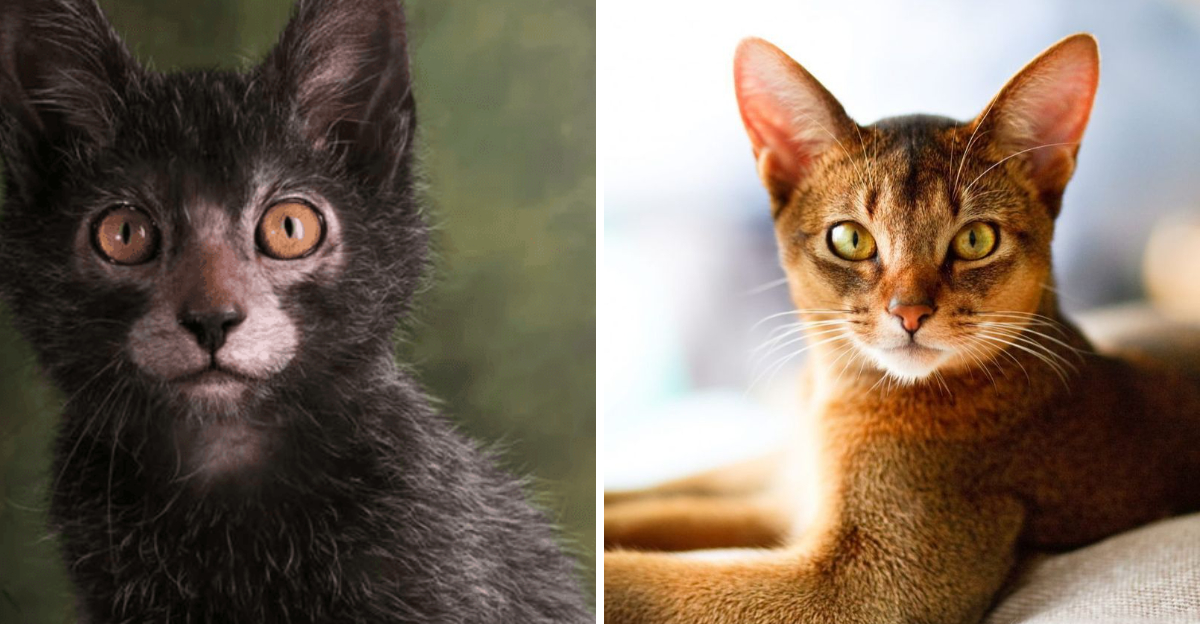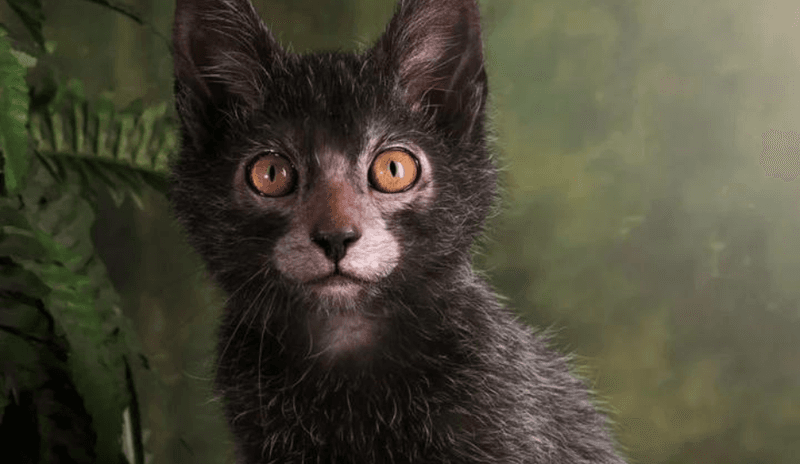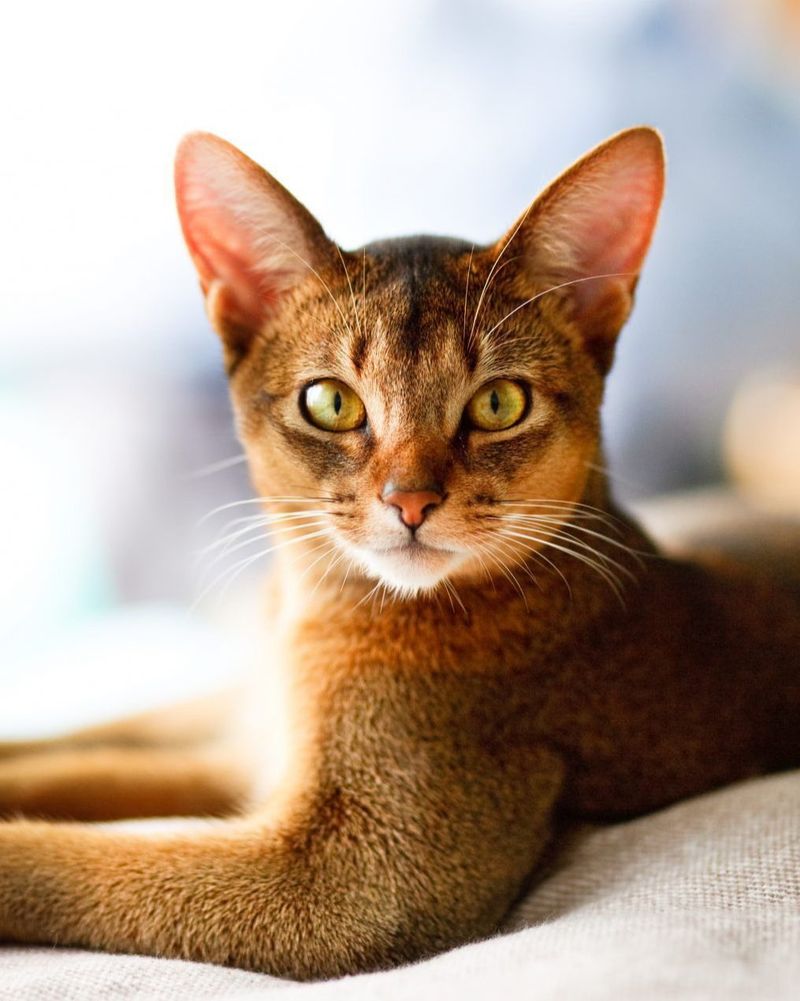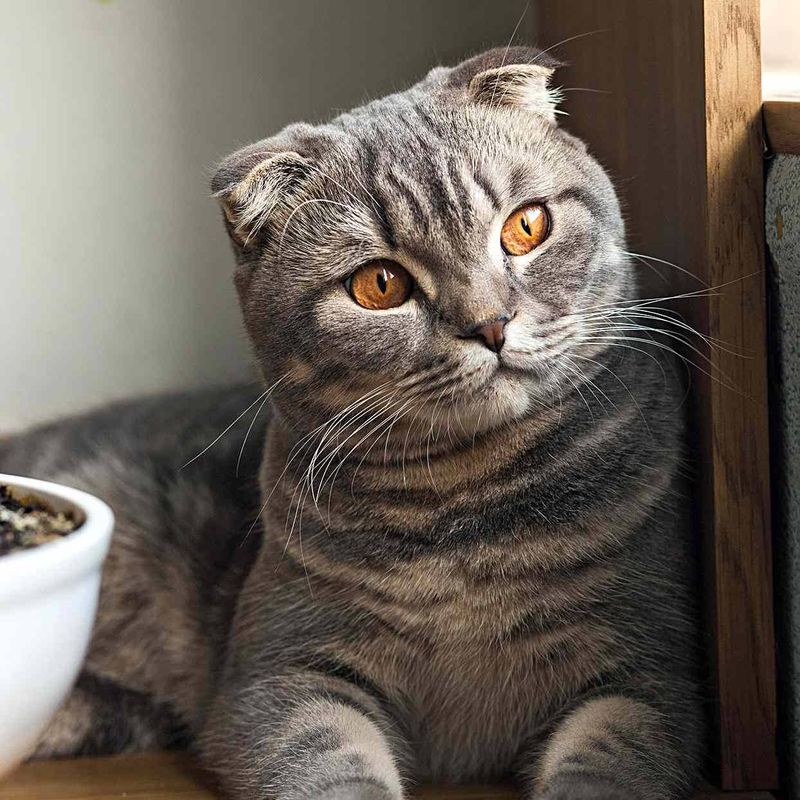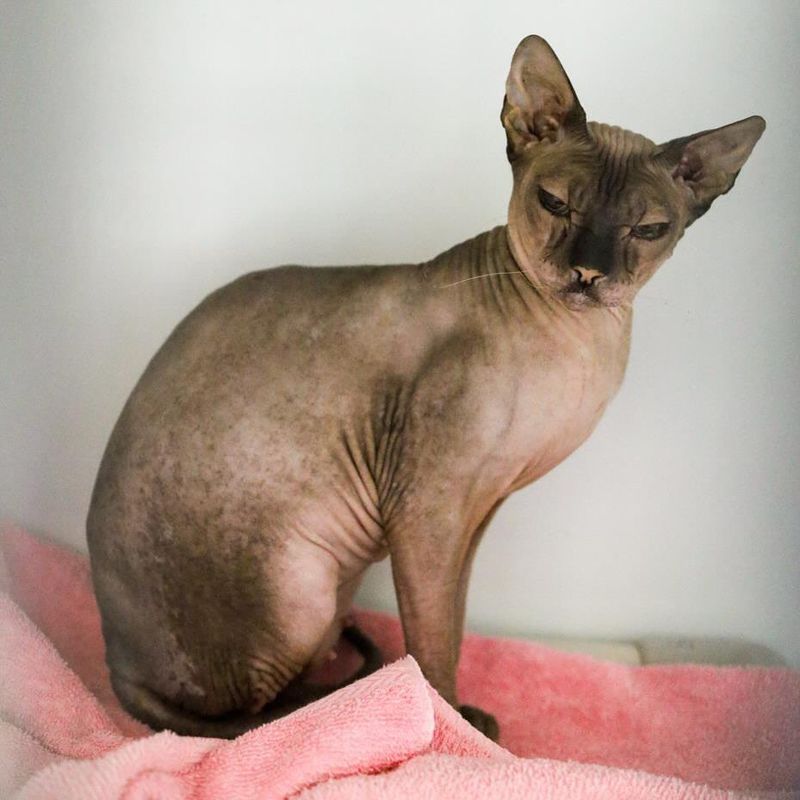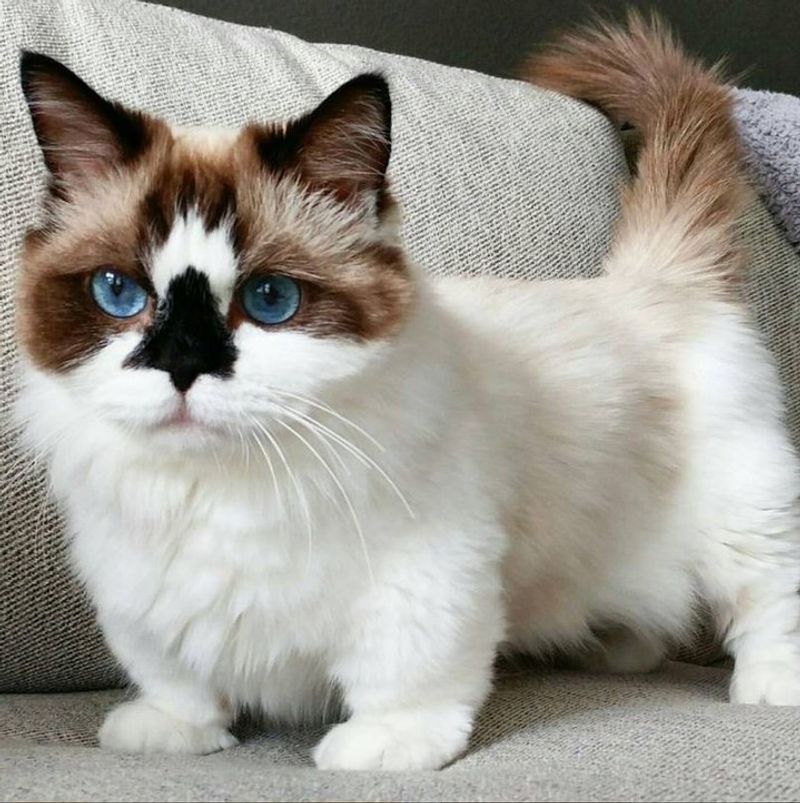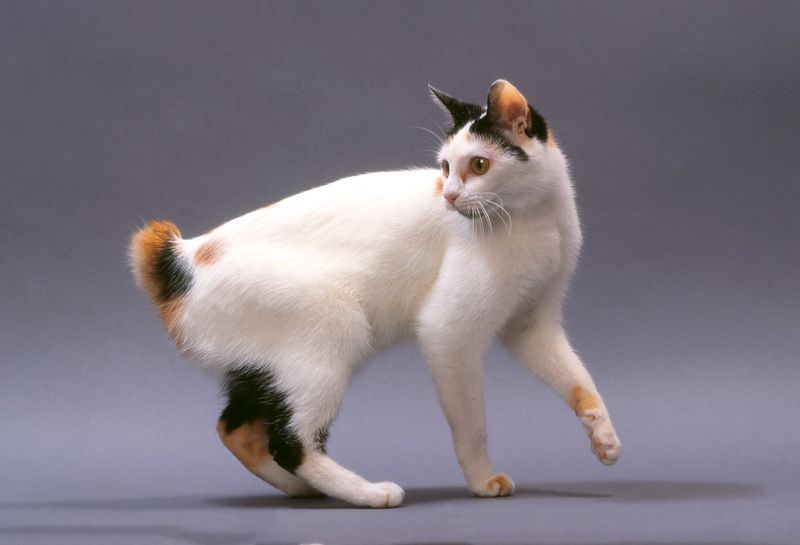📖 Table of Content:
- 1. The Lykoi: The Mysterious Allure
- 2. The Abyssinian: Ancient Elegance
- 3. Scottish Folds: Feline Teddy Bears
- 4. Sphynx: The Naked Charmer
- 5. Munchkin Cats: Short Legs, Big Personality
- 6. Russian Blue: Regal Silver Sheen
- 7. Bengal: Mesmerizing Wild Patterns
- 8. Rex Cats: The Curly-Coated Wonders
- 9. Japanese Bobtail: Bunny-Like Tail
- 10. Ragdoll: The Floppy Living Doll
Most cats are cute—but some are downright unforgettable. With features that range from werewolf-like fur to bunny-shaped tails, these rare and remarkable felines prove that beauty comes in many forms. They defy expectations, shatter stereotypes, and steal hearts with their one-of-a-kind looks and equally endearing personalities.
Whether you’re a longtime cat lover or just someone who appreciates the extraordinary, these unique kitties will leave you mesmerized, amused, and maybe even a little obsessed. Ready to meet the wildest wonders of the feline world?
No matter how unusual they appear, one thing’s for certain: these felines have a special magic that turns heads, sparks curiosity, and deepens our appreciation for the incredible diversity in the cat kingdom.
1. The Lykoi: The Mysterious Allure
The Lykoi, often called the “werewolf cat,” captivates with its unique and slightly eerie appearance. With a partially hairless coat and piercing yellow eyes, it evokes the mystery of a creature from a gothic tale.
Despite its wild looks, the Lykoi is known for its affectionate and loyal nature. These cats often form strong bonds with their humans, displaying a playful and curious demeanor.
The Lykoi’s mysterious appearance and endearing personality create a fascinating contradiction, making it a unique and cherished addition to any household.
2. The Abyssinian: Ancient Elegance
Glimpsing an Abyssinian is like peering into history. Its sleek fur and striking almond eyes are reminiscent of cats depicted in ancient Egyptian art. With a coat resembling the warm tones of a sunset, the Abyssinian radiates a regal presence.
These cats are known for their playful energy and curious nature, often exploring their surroundings with an unending sense of wonder. Their intelligence and agility make them natural adventurers at heart.
Abyssinians form strong bonds with their human companions, enjoying interactive play and cuddles. Their unique blend of history, beauty, and personality ensures they leave a lasting impression.
3. Scottish Folds: Feline Teddy Bears
With ears that fold forward and downward, Scottish Folds often resemble tiny owls or teddy bears more than typical cats. This adorable trait comes from a natural genetic mutation first discovered in a barn cat named Susie in 1961 Scotland.
Their unusual ears result from cartilage that doesn’t develop normally, creating that distinctive folded appearance. Not all kittens in a Scottish Fold litter will have folded ears—some are born with straight ears and never develop the fold.
Beyond their signature ears, these cats are known for sitting in the “Buddha position” with their paws tucked under their bodies and their round faces completing the stuffed-toy look that has made them favorites among cat lovers.
4. Sphynx: The Naked Charmer
Hairless and wrinkled with oversized ears, Sphynx cats challenge conventional beauty standards while winning hearts with their extroverted personalities. Despite their alien appearance, these cats are incredibly warm and soft to touch—feeling like warm suede or a heated peach.
Contrary to popular belief, Sphynx cats aren’t completely hairless. They’re covered in a fine down similar to peach fuzz that’s nearly invisible to the eye. Their lack of fur means they seek warmth constantly, often cuddling under blankets or with their humans.
These social butterflies crave attention and interaction more than many cat breeds. Sphynx owners often describe them as “dog-like” in their desire to greet visitors and participate in all household activities.
5. Munchkin Cats: Short Legs, Big Personality
Scampering around on legs about half the length of a typical cat’s, Munchkins resemble feline versions of Dachshunds or Corgis. Their short limbs result from a natural genetic mutation that affects cartilage development.
Despite their shortened legs, these cats are surprisingly agile and quick. Munchkins can run, jump, and play with remarkable skill, though they might not reach the same heights as their longer-legged cousins. Their bodies remain proportional to normal cats—only their legs are different.
Known for their playful, outgoing temperaments, Munchkins often retain kitten-like behavior well into adulthood. Many enjoy hoarding small toys and sitting upright on their haunches like prairie dogs, earning them the nickname “magpie cats.”
6. Russian Blue: Regal Silver Sheen
Shrouded in a plush double coat that shimmers with a silvery-blue hue, Russian Blues possess fur unlike any other breed. Their dense coat stands out at a 45-degree angle from their body, creating an effect that makes them appear to be wearing luxurious velvet.
Legend claims these elegant cats once belonged to Russian tsars and were hunted for their plush fur. Their emerald green eyes develop gradually—kittens are born with yellow eyes that slowly transform over their first four months of life.
Russian Blues are famous for their “smile” created by their mouth structure and whisker pads. Their reserved yet affectionate nature makes them perfect companions for quiet homes, where they form deep bonds with their chosen humans while maintaining a regal dignity.
7. Bengal: Mesmerizing Wild Patterns
Prowling through homes with the confident stride of their wild ancestors, Bengal cats showcase coats that could belong in a jungle. Their distinctive spotted or marbled patterns shimmer with a unique feature called “glitter”—a sparkly effect where the fur tips reflect light.
Created by crossing domestic cats with Asian leopard cats, Bengals retain wild looks while displaying house cat temperaments. Their muscular bodies and athletic abilities make them impressive jumpers and climbers who can leap to astonishing heights from a standstill.
Many Bengals share a fascinating attraction to water, unlike typical cats. Owners often find these curious felines splashing in sinks, joining shower time, or even swimming. Their playful, active nature requires plenty of stimulation to keep these mini-leopards content.
8. Rex Cats: The Curly-Coated Wonders
Running your fingers through a Rex cat’s coat feels like touching crushed velvet or a lamb’s wool sweater. These unique felines—including Devon Rex, Cornish Rex, and Selkirk Rex varieties—sport curly, wavy, or crimped fur due to genetic mutations affecting hair structure.
Devon Rex cats, with their elfin faces and oversized ears, have been likened to cats crossed with aliens or pixies. Their whiskers often curl so tightly they appear broken or missing. Cornish Rex cats retain only the soft undercoat of normal cats, lacking the typical guard hairs.
The newest Rex variety, the Selkirk, differs by having a plush, teddy-bear-like coat with random curls. All Rex varieties tend toward playful, people-oriented personalities that match their unconventional appearance.
9. Japanese Bobtail: Bunny-Like Tail
Bouncing through Japanese art and folklore for centuries, the Japanese Bobtail’s distinctive pom-pom tail resembles a rabbit’s more than a typical cat’s. Their shortened tails result from a natural genetic mutation that creates a kinked, flexible tail usually 1-3 inches long.
No two bobtails have identical tail patterns—each is as unique as a fingerprint! These energetic, intelligent cats are considered lucky in Japan, where they’ve been depicted in art and literature since the 6th century. The famous beckoning cat figurine (Maneki Neko) seen in businesses worldwide is based on this breed.
Japanese Bobtails are known for their musical voices with a wide range of tones and chirps. Many enjoy playing in water and can learn tricks easily, making them entertaining companions who bring both joy and supposed good fortune.
10. Ragdoll: The Floppy Living Doll
Pick up a Ragdoll cat and experience their signature trait—completely relaxing in your arms like a child’s stuffed toy. This unusual tendency to go limp when held gave the breed its distinctive name and sets them apart from most cats who prefer controlling how they’re carried.
Developed in California during the 1960s, Ragdolls are known for their striking blue eyes and color-point coats similar to Siamese cats. Unlike most color-point breeds, they grow to impressive sizes—males often reaching 20 pounds. Their semi-long fur lacks an undercoat, making it less prone to matting.
Perhaps most surprising is their dog-like tendency to follow owners from room to room. Many Ragdolls come when called, play fetch, and greet their humans at the door, challenging typical notions of independent feline behavior.
